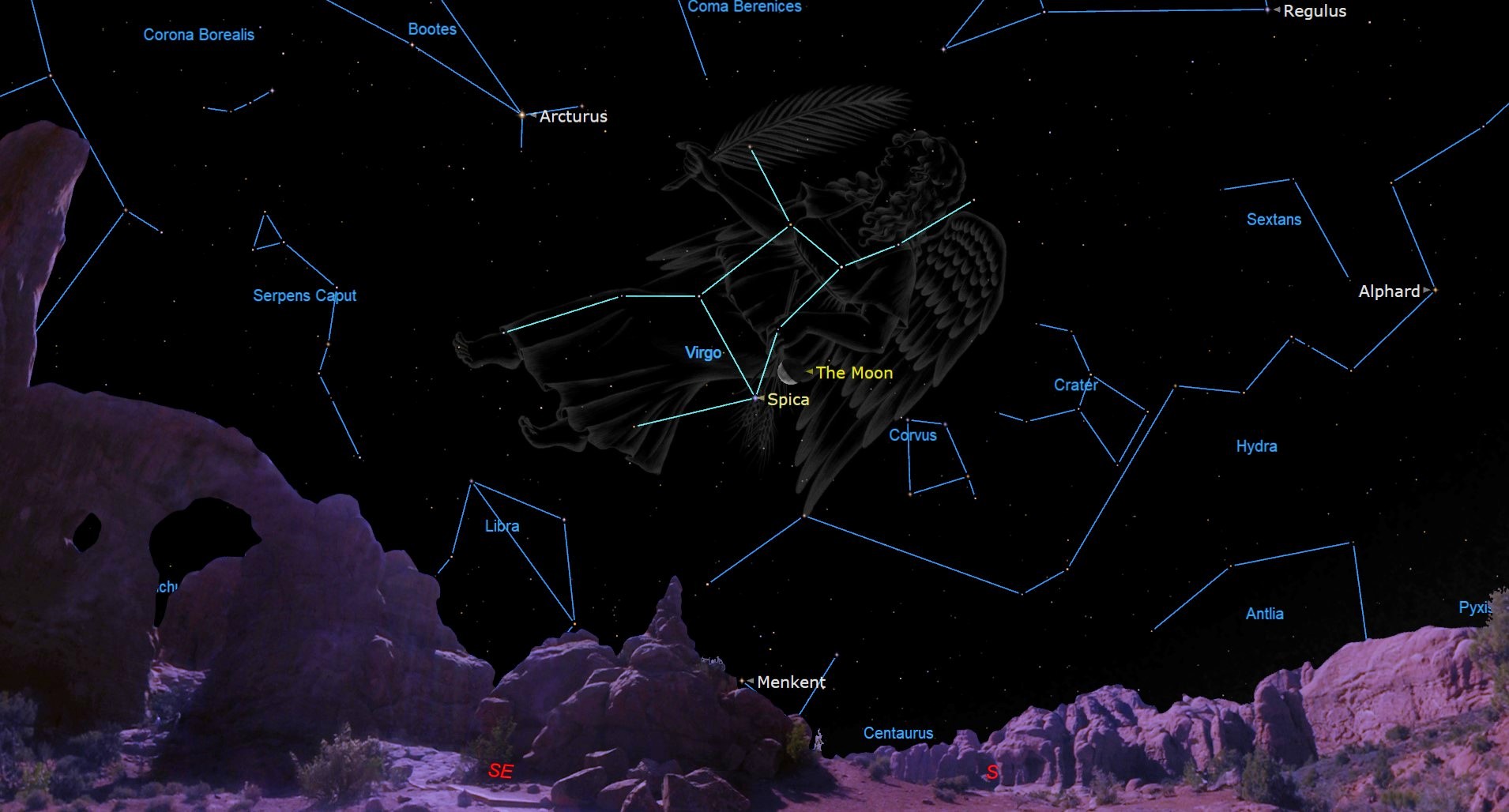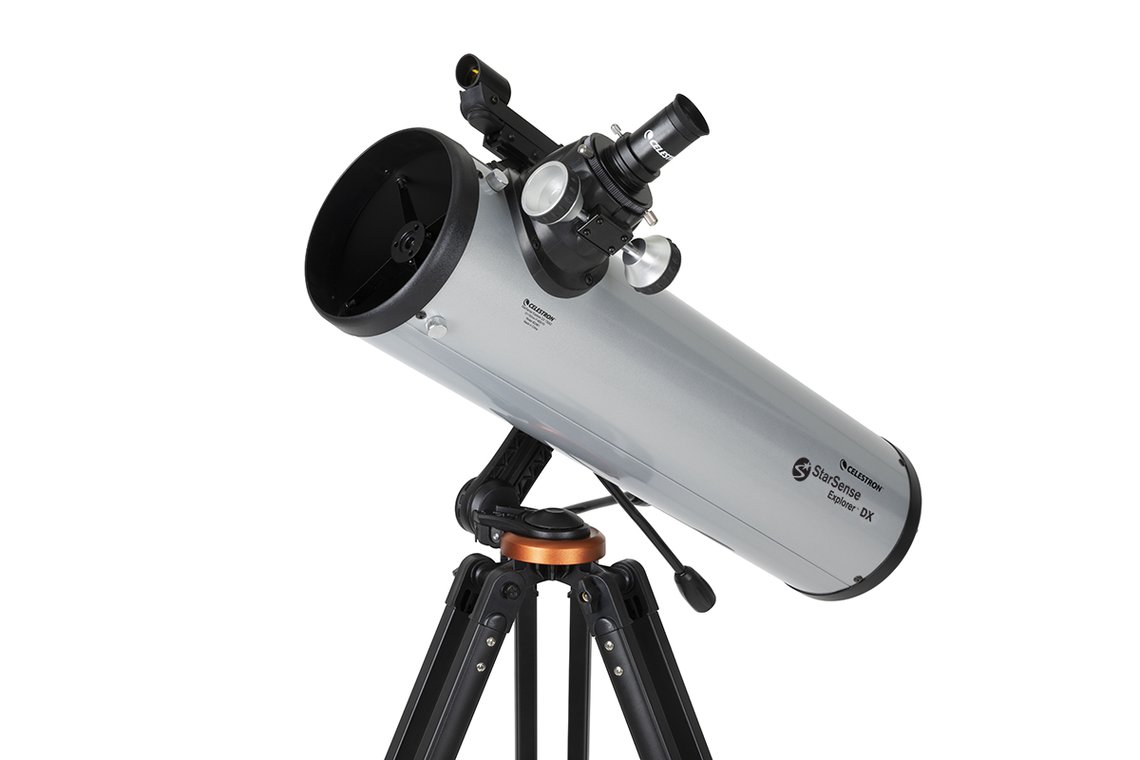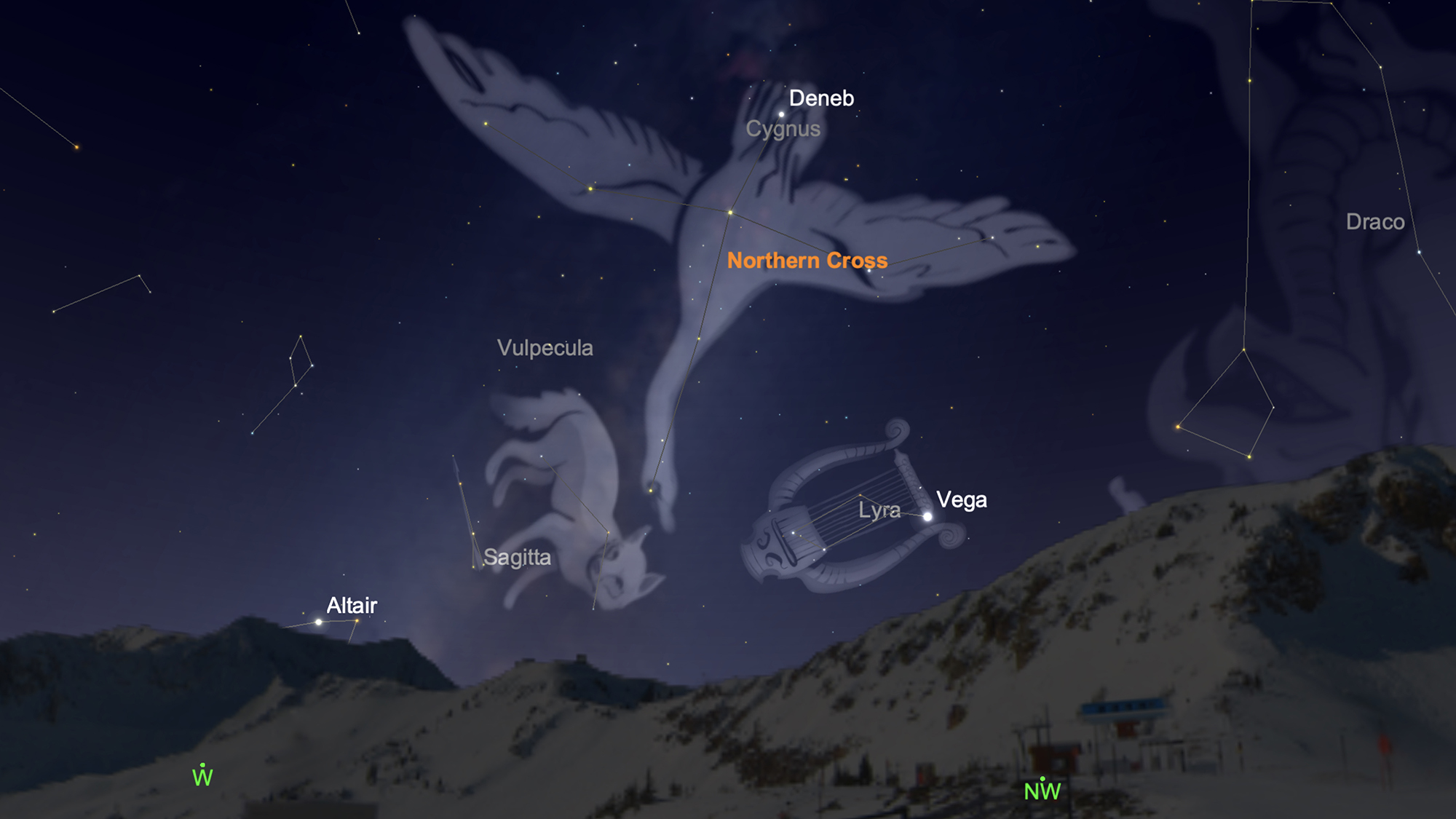
Christmas is here. And the night sky tonight obliges by presenting a beautiful display of celestial sights, perfectly timed out to coincide with the holiday.
In ancient times, Dec. 25 was the date of the lavish Roman festival of Saturnalia, a sort of bacchanalian thanksgiving to the god of agriculture, for whom the slowest moving of the then-known planets, Saturn, was named. Saturnalia was celebrated on the date of the winter solstice by the calendar then in use, and it also marked the fact that the sun had stopped creeping southward in the noon sky and would thenceforth cross the meridian higher each day, warming Earth and reawakening nature. This holiday of the Romans was a version of similar celebrations by other early peoples.
It has been said that early Christians chose the date of Saturnalia on which to celebrate Christmas in order to avoid attention and thus escape persecution. When the Roman emperor Constantine officially adopted Christianity in the 4th century, the date of Christmas remained Dec. 25.

Joe Rao is a veteran meteorologist and eclipse chaser who also serves as an instructor and guest lecturer at New York's Hayden Planetarium.
Cold and clear
Among the many varied customs linked with this special season for thousands of years, the exchanging of gifts is almost universal. Nature offers us the two gifts of longest nights and a sky more transparent than usual. Newcomers to astronomy often assume that winter's especially dark skies mean all forms of observing are at their best.
But this is far from so. The "crystal clear" winter skies and "unusually bright stars" are due to two factors. First, the cold temperatures prevent the air from holding as much moisture as in summer; less haze and greater atmospheric transparency are the result. This is also why daytime skies in winter are generally a deeper, crisper blue. Second, the stars overhead at this time of year are brighter than those of summer. They are among the most luminous beacons lining our local spiral arm of the Milky Way galaxy.
However, the other side of the coin is that cold, sparkling skies are often very unstable, with strong atmospheric turbulence that makes star images churn and fuzz when viewed through a high-power telescope. This turbulence is also the reason that on wintry nights the stars — especially the brightest ones — seem to scintillate dramatically; the charming "Twinkle, Twinkle, Little Star" of the nursery rhyme is (unfortunately) also the most obvious evidence of an unstable atmosphere.
Christmas Star: 2024
Our current evening sky is especially rewarding. The eastern sky is filled with brilliant stars — I've always likened it to a sort of "celestial Christmas tree." Prominently placed in the south-southwest sky, after sundown, is the brilliant planet Venus, often referred to as the "Shepherd's Star" by the legendary French Astronomer, Nicolas Camille Flammarion (1842-1925). It shines like a silvery lantern for 3.5 hours after sunset, making for an eye-catching celestial ornament. Some may wonder if the fabled Star of Bethlehem might have been something similar. Astronomers and biblical scholars have long pondered this question.
Breaking space news, the latest updates on rocket launches, skywatching events and more!
Would the Magi, for instance, have put much significance in the planets? Presumably they were followers of Zoroaster and believed the planets indicated the actions of the gods and were important to the affairs of man. Such primitive religions were the origins of today's astrology and the ancestors of astronomy.
Perhaps the Magi witnessed a planetary grouping of particular beauty; an exceptionally close conjunction of two planets or an eye-catching grouping of several planets. New knowledge of the old astrological beliefs and modern computer-based planetary tables may yet shed new light on this age-old question.
Speaking of other planets, there are three others decorating our evening sky. At 7:30 p.m. local time, look about one-third up from the southwest horizon to see a bright star shining with a yellowish-white sedate glow. That would be Saturn, which although glowing at a respectable first magnitude, appears only 1/145 as bright as dazzling Venus.
Now turn around and look halfway up in the east and you'll see a brilliant silvery white "star." That's Jupiter, which with the sole exception of Venus, is the brightest object in the sky. And finally, very low in the east-northeast sky you'll see a very bright fiery colored object, which will be Mars, currently growing brighter as it approaches Earth. In fact, on Jan. 12, when it will be closest to Earth, it will appear 45% brighter than it will be on Christmas night and will almost be a match for Sirius, the brightest star in the sky.
A Cross, Three Kings and a Manger

Looking for a telescope for the next night sky event? We recommend the Celestron StarSense Explorer DX 130AZ as the top pick for basic astrophotography in our best beginner's telescope guide.
Step outside around 8:30 p.m. and look low toward the northwest. There you will find a remnant of warm summer nights, Cygnus, the Swan. In mid-August, when many eyes are looking skyward trying to view the Perseid Meteor Shower, Cygnus is directly overhead at around midnight and flying seemingly on southwest trajectory.
But now, on these frosty early winter evenings, the Swan is poised to fly straight down into the northwest horizon. Distinctive groupings of stars forming part of the recognized constellation outlines, or lying within their boundaries, are known as asterisms and the brightest six stars of Cygnus compose an asterism more popularly called the Northern Cross. Bright, white Deneb decorates the top of the Cross. Albireo, at the foot of the Cross, is really a pair of stars of beautifully contrasting colors: a third magnitude orange star and its fifth magnitude blue companion are clearly visible in even a low power telescope.
The pattern of the Cross is best oriented for viewing now, appearing to stand majestically upright on the northwest horizon during this holiday season.

At the same time, about halfway up in the southeast shines Orion, the Mighty Hunter. One of my mentors in astronomy was Dr. Fred Hess (1920-2007), a popular lecturer for over three decades at New York's Hayden Planetarium. Dr. Hess used to tell his audiences at Christmastime, that Orion resembled a large package in the sky, tied with a pretty bow across the middle.
The bow was represented by three nearly equally bright and nearly equally spaced stars popularly known as Orion's belt. But I like to tell planetarium audiences that we could possibly also think of these three stars, whose names are Alnitak, Alnilam and Mintaka, as representing the Three Wise Men.
And if we were to consider these three stars as representing the Magi, then not too far away, to the east, within the faint zodiacal constellation of Cancer, the Crab is the star cluster known as Preasepe, the Manger. A manger is defined as a trough or open box in which feed for horses or cattle is placed. But the Book of St. Luke also tells us that the baby Jesus, wrapped in swaddling clothes, was set down in a manger because there was no room at the Inn. In our current Christmas week evening sky, Preasepe represents the manger where Christ was born.
Just before midnight it's situated about halfway up in the eastern part of the sky. If you have binoculars, sweep across the region of the sky roughly midway between the bright stars Regulus (in Leo) and Pollux (in Gemini). You'll run across Preasepe appearing as a beautiful object to behold, appearing to contain a splattering of several dozen stars. Using his crude telescope, Galileo wrote in 1610 of seeing Preasepe not as one fuzzy star, but as "… a mass of more than 40 small stars." If you have access to a dark non-light polluted sky, the manger appears as a soft, fuzzy patch or dim glow to the unaided eye.
Happy holidays and many clear and starry skies in the New Year!
Joe Rao serves as an instructor and guest lecturer at New York's Hayden Planetarium. He writes about astronomy for Natural History magazine, the Farmers' Almanac and other publications.
Join our Space Forums to keep talking space on the latest missions, night sky and more! And if you have a news tip, correction or comment, let us know at: community@space.com.

Joe Rao is Space.com's skywatching columnist, as well as a veteran meteorologist and eclipse chaser who also serves as an instructor and guest lecturer at New York's Hayden Planetarium. He writes about astronomy for Natural History magazine, Sky & Telescope and other publications. Joe is an 8-time Emmy-nominated meteorologist who served the Putnam Valley region of New York for over 21 years. You can find him on Twitter and YouTube tracking lunar and solar eclipses, meteor showers and more. To find out Joe's latest project, visit him on Twitter.
-
rod ReplyAdmin said:December is the month of the winter solstice, which a large part of the world associates with such celebrations as Nativity festivals.
The Christmas Night Sky: A Yuletide Stargazing Guide : Read more
Quite fun here. This morning I was out looking at the Sun using my glass, white-light solar filter. There are some unnumbered sunspots showing up now but look smaller than Earth size. From my log https://theskylive.com/ shows both sunspot groups that I viewed this morning. The skylive.com image indicates the sunspots are a bit smaller than Earth size. Earth rotation apparent while viewing, keep the Sun centered in FOV.]
I did enjoy some views of Venus last evening too shortly after 1700 EST. For folks who track the Sun using good solar telescopes and filters, the Sun's angular size is slowly increasing as we approach perihelion distance, very noticeable if you observe and track throughout the year. -
redriver71 ReplyAdmin said:December is the month of the winter solstice, which a large part of the world associates with such celebrations as Nativity festivals.
The Christmas Night Sky: A Yuletide Stargazing Guide : Read more
I am new to your site. I do access your site to find the location of planets although I don't know much about the planets. I have a question, why, on your site, do the photos not show. All I get is a blank page that says : "SPACE,COM" . Just curious. Thanks. -
STARPUNK Reply
The sky is partly cloudy where I'm at but I've been able to observe pretty well. Orion is up in the east, Jupiter is very high ('Christmas Star'?), the Cold Moon is a day short of full and in the western sky I saw the 'Devil' Comet 12P/Pons-Brooks for the 17th time. Beings it's in Lyra, it's still easy to locate - even if it has faded.Admin said:December is the month of the winter solstice, which a large part of the world associates with such celebrations as Nativity festivals.
The Christmas Night Sky: A Yuletide Stargazing Guide : Read more
